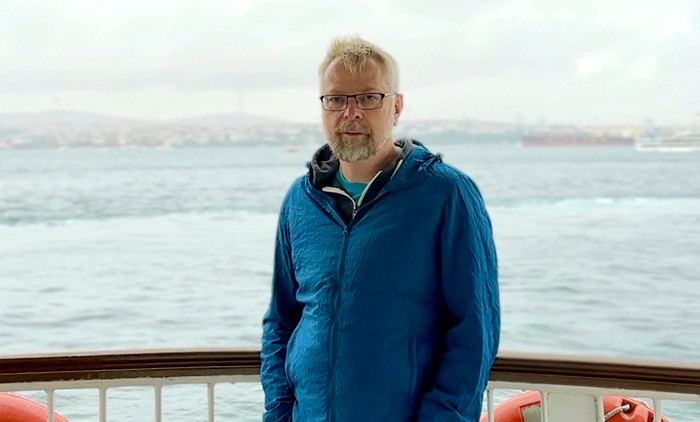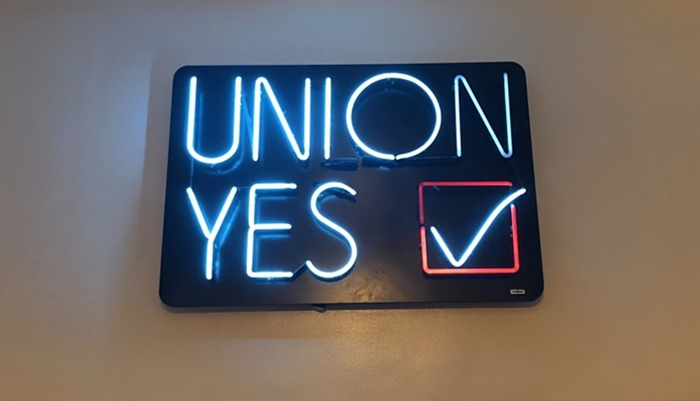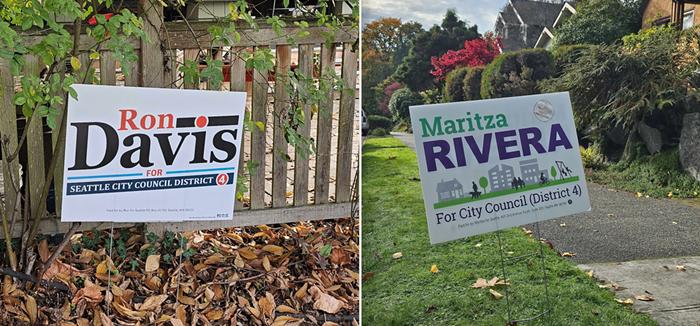The Twin Cities were always a haven for people who wanted more and wanted to do more, a stage for re-imagining one's self, the way home towns never are. For years, being a city in the Midwest--at least this part of the Midwest--meant drawing from a rural population that was mostly white. But that wasn't all bad. A homogeneous citizenry, along with harsh winters, made it easy for people around here to be generous with each other, to foster Minnesota's legendary brand of nice, peace-loving liberalism.
Pockets of radicals have existed all over the state, socialist Finns up on the union-heavy Iron Range being a fine example. But it was in the urban centers of Minneapolis and St. Paul, respites from the big nowhere, that our progressive values were forged. Through the years, city pols have organized workers and fought for health care and public housing and education--men like Minneapolis' Floyd B. Olson, a socialist who served as governor during the 1930s, and former Vice President Walter Mondale (Minnesota, with the exception of the District of Columbia, stood alone in choosing Mondale for president in 1984 over Ronald Reagan). But never were we city dwellers more proud than when Hubert Horatio Humphrey Jr. --a small-town boy who grew up to be mayor of Minneapolis--stepped up the microphone at the 1948 Democratic National Convention and convinced the party to finally take a stand against segregation. With his giant forehead shining, he sermonized, "The time has arrived in America for the Democratic Party to get out of the shadow of states' rights and walk forthrightly into the bright sunshine of human rights!" Humphrey knew what he was talking about. Just two decades earlier, three black men had been lynched in Duluth.
Yes, everything in Minnesota's urban centers was going along famously. Back pats all around. Then minority people started moving in, transforming our pasty Shangri-la into a more typical, and much more interesting, metropolis. The last decade alone has seen an enormous influx of black people from other parts of the U.S. and from Africa, as well as of Mexicans and Hmong. In part, that's because word got around that this was a somewhat cushy place to live (MinnesotaCare, the state health plan, keeps people from dying in the streets). According to the Census Bureau, more than 30 percent of Minneapolis and St. Paul dwellers are non-white--16 percent are foreign born. That's a remarkable transformation. Suddenly, we've got zaub ntsuab, kick-ass Oaxacan tacos, and stores trying to sell marzipan to Somalis.
Not everyone has been thrilled about the presence of darker faces. As the city changed, the "family values" folks moved away. However, they didn't move all the way away. Oh, no. They moved to the suburbs. Tract housing began to sprawl in all directions as many wild-eyed whities climbed over each other to get the hell out of town. And good riddance, I say. Except that these defenders of all that's wholesome have formed a band around the city, a ring of red that's threatening to strangle the very idea of beneficent government. They recline out there on their patio furniture, drinking Zima while squinting to see the edges of their lawns, and complain about the harrowing nature of city streets they never walk.
Suburban life is a perverted response to the perceived problems of the city, where urban unpredictability and diversity are supplanted by the Olive Garden and visits to the biggest mall in the country. Suburbanites drive downtown for work--occupying jobs that rightfully should go to city dwellers--but then they and their earnings hightail it out before sundown, presumably when the human sacrifices begins. They may return in the evening every once in the while for a showing of Riverdance, but only with the car windows rolled all the way up.
These are exactly the people the Republican Party is looking for. President Bush visited Minnesota--mortifyingly, now a swing state--eight times during his recent campaign. But he didn't speak much in the city (his one appearance in downtown Minneapolis was met with fierce protests; a Bush supporter got punched in the nose). He lavished attention on the suburbs, places like Eden Prairie, Chanhassen, and Blaine. His message simply doesn't play well in the city, where people value breathable air and aren't offended by gay couples marrying, where enemy is forced to brush up against supposed enemy and eventually both learn to tolerate each other and live together. The message hits home in the fearful, angry, awful, isolated burbs. Minneapolis, it should be noted, voted 78 percent in favor of John Kerry; St. Paul, 73 percent. But in Chanhassen, just 20 miles from Hennepin Avenue, the very heart of Minneapolis, Bush drew 62 percent of the vote.
Luckily, the sheer number and determination of urban voters overwhelmed the suburban backlash. It's thanks to the electorate of the Twin Cities that Minnesota remains, just barely, a blue state. And within the city, much of the credit goes to our newest citizens--the Hmong, Mexicans, and Africans--who tend to vote like city-dwellers. A favorite scene from the election took place at my local polling place, in a historically Polish neighborhood. An African woman wearing bright robes stood in a gray plastic voting booth with her ballot. She spoke only a little English, so she asked for assistance. A poll volunteer approached and embarked upon a lengthy explanation. The African woman interrupted. "Kerry," she said loudly. "I want Kerry." That was that.
So, sorry suburbs. As Minneapolis and St. Paul become more diverse, they will only become more liberal. Not only that, the city is growing and will continue to grow. Already our values are spreading to some of the inner-ring suburbs, making those areas liberal, too. Incessant carping and fear mongering won't change that. So tell you what, suburbs: Why not find jobs in your own towns--the suburbs you cling to like bulletproof vests--so you don't have to drive to the city at all? Then we could tear down a few parking ramps and cancel Riverdance for good. In fact, why not pick up and move all the way away? It's true that when you're attached to a city in the middle of nowhere, it's hard to think of where else to live. But, hey, I believe there's an Olive Garden in Sioux Falls, South Dakota. A nice red state. And a couple of Wal-Marts, too.


















